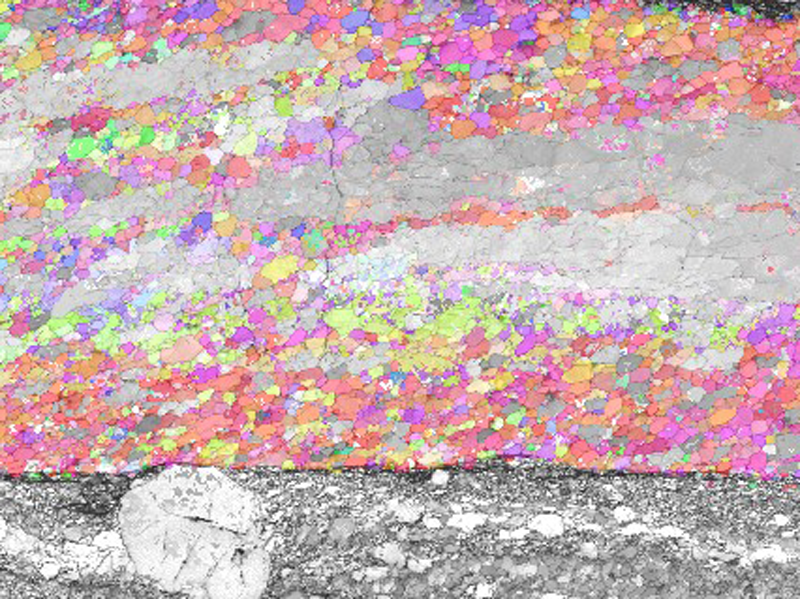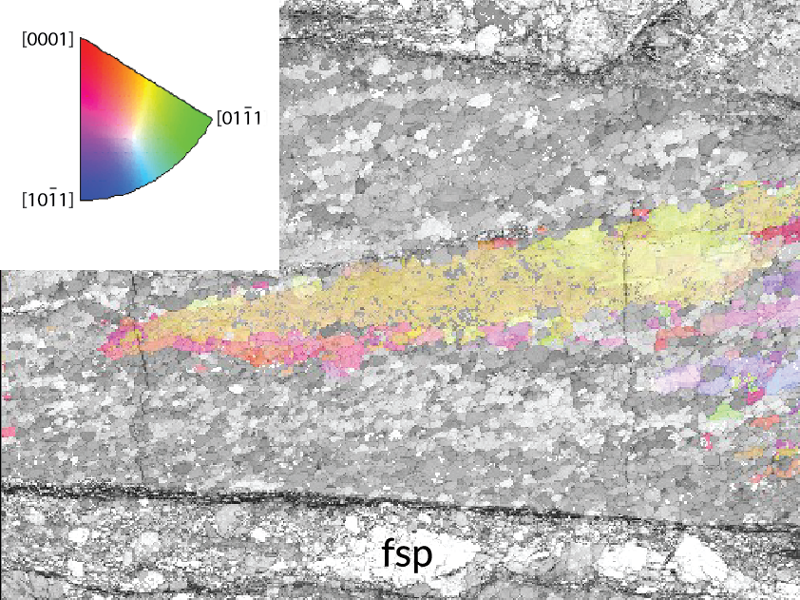Dr. Colin Shaw

Name and Position:
Colin A. Shaw
Director, Undergraduate Scholars Program
Research Scientist, Department of Earth Sciences and Energy Research Institute
What are your central research questions?
My research focuses on microstructure of natural materials, deformation mechanisms in rocks and minerals, brittle-plastic coupling in mid-crustal rocks and glacial ice,andfluid-rock interactionswithapplications to geologic carbon sequestration.
What motivates or inspires your research?
I am curiousabout the natural worldand I love discovering things that are hidden or obscure.
What is your academic background, and what professional development prepared you to do this research (i.e., what advice to young scientists who might be interested in pursuing this research as a career opportunity?)
I am a structural geologist with broad interests in material science and continental tectonics.
What is the funding source for this research?
NSF, DOE,and othersources.
Please provide a few recent publicationthat resulted from your research done at ICAL.
*student, † postdoctoral researcher.
*Hughes, C.A., Jessup, M.J., Shaw, C.A., Newell, D.L., 2020. Evidence for strain rate variation and an elevated transient geothermal gradient during shear zone evolution in the Cordillera Blanca, Peru. Tectonophysics, v. 794, 228610. https://doi.org/10.1016/j.tecto.2020.228610.
*Scott, B.E., Newell, D.L., Jessup, M.J., *Grambling, T., Shaw. C.A., 2020. Structural controls on crustal fluid circulation and hot spring geochemistry above a flat-slab subduction zone, Peru. Geochemistry, Geophysics, Geosystems (G3), DOI 10.1029/2020gc008919. AGU Editors’ Highlight Selection, August 2020
*Hughes, C.A., Jessup, M.J., Shaw, C.A., Newell, D.L., 2019, Deformation conditions during syn-convergent extension along the Cordillera Blanca shear zone, Peru: Geosphere, v. 15, no. 4, p. 1342-1367, DOI 10.1130/GES02040.1.
†Omosebi, O., Shaw, C., *Thrane, L., Spangler, L., 2018. Characterization of different depositional facies of rocks from the Kevin Dome for carbon sequestration. Social Science Research Network, Special Issue: Greenhouse Gas Control Technologies 14. Social Sciences Research Network – SSRN, https://ssrn.com/abstract=3365697.
*Corthouts, T.L., Lageson, D.R., Shaw, C.A., 2015. "Polyphase deformation, dynamic metamorphism, and metasomatism of Mount Everest's summit limestone, east central Himalaya, Nepal/Tibet." Lithosphere, vol. 8, issue 1, pp. 38-57.

Electron Backscatter Diffraction (EBSD) orientation maps showing deformation textures in mylonite from the Cordillera Blanca Detachment fault system in the Peruvian Andes. In the maps quartz grains used in the analysis are color-coded according with inverse pole figure (IPF) color scheme shown in top left of figure. IPF colors indicate the crystal direction vector that is parallel to the vertical edge of the map (y-direction). Pixels with gray scale coloring were excluded from the analyzed set. The upper panels highlight large relict quartz grains with highly distorted lattices while the lower panels highlight dynamically recrystallized grains with low internal strain. Horizontal field of view is approximately 275 microns.

Electron Backscatter Diffraction (EBSD) orientation maps showing deformation textures in mylonite from the Cordillera Blanca Detachment fault system in the Peruvian Andes. In the maps quartz grains used in the analysis are color-coded according with inverse pole figure (IPF) color scheme shown in top left of figure. IPF colors indicate the crystal direction vector that is parallel to the vertical edge of the map (y-direction). Pixels with gray scale coloring were excluded from the analyzed set. The upper panels highlight large relict quartz grains with highly distorted lattices while the lower panels highlight dynamically recrystallized grains with low internal strain. Horizontal field of view is approximately 275 microns.
